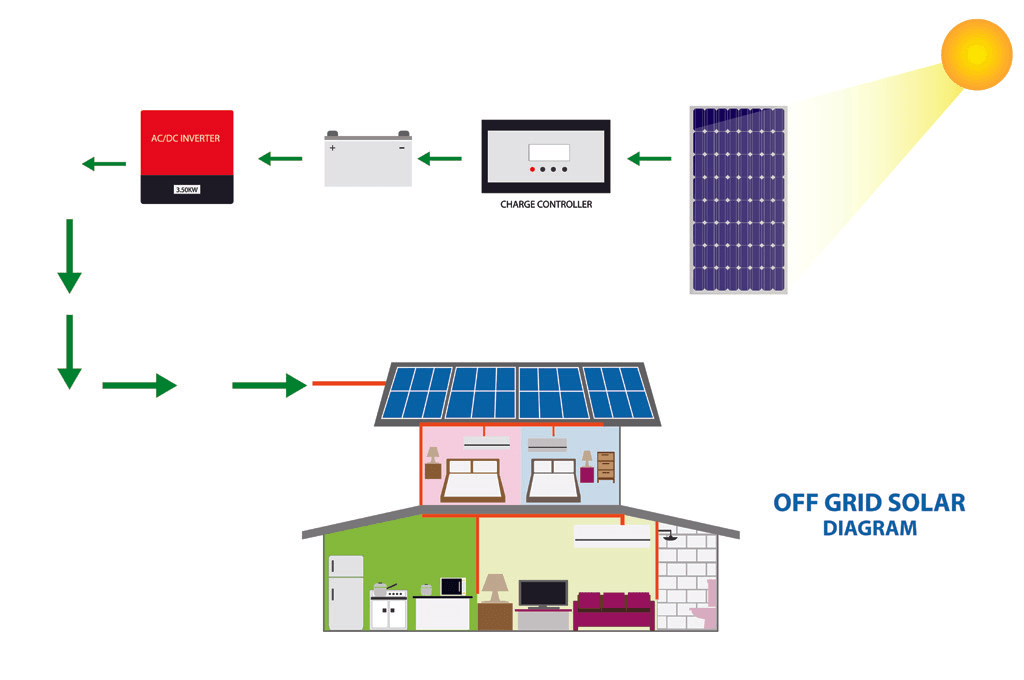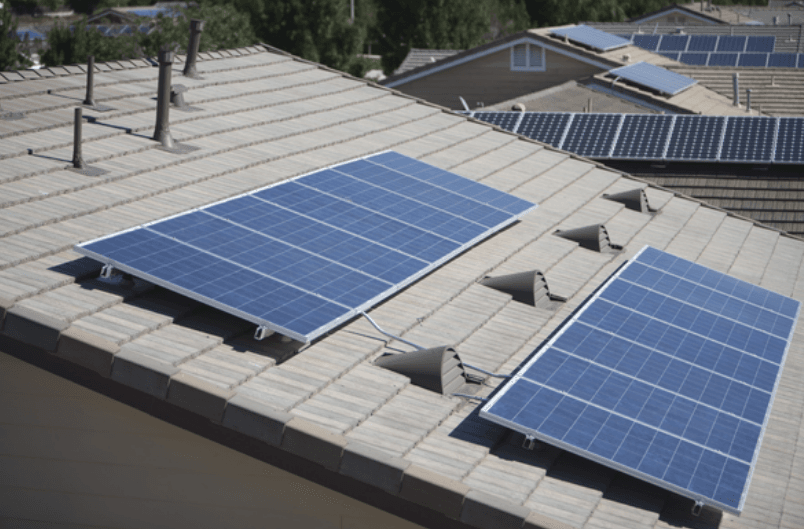The solar system is now the new alternative to beat the higher cost of utility supply. A lot of homeowners are now trying different power supplies. It's either they choose the off-grid solar system or the grid-tied solar system.
We know there are advantages and disadvantages of solar systems, but we know they're benefits.
Today, let’s dig deeper into a solar system, specifically the off-grid system. And, let’s understand why direct current is used in the off-grid system?
The off-grid system requires cautious maintenance and utmost care than the grid-tied solar system. The reason for this is that almost all household appliances are designed to connect with AC power.
The grid-tied solar system won't give you much burden about plugging in different types of appliances because almost all appliances we have today are AC-compatible.


Direct current or DC has a constant flow of electrons while AC flows alternately back and forth with high speed. The best things about AC electricity are, less power loss and it’s easy to build up and down using a transformer.
On the other hand, DC is a direct opposite of AC. Using DC as your source of electricity will end you up losing more voltage (in long distances) and that loss can’t be changed to connect to the appliance you are using.
Solar electric systems, like the off-grid system, convert sunlight into direct current – this electricity is like your everyday battery which you use – and it flows in one direction. Basically, solar cells have two layers of silicon plus the other separation layer.
These layers are wired together to make a module or panels.
The layers have their own roles. If the sunlight hit the panels, the photons will interact with the electrons in the silicon of the upper layer. In this phase, the atoms are disturbed and interact with the electrons.
The electrons are attracted to the atoms and they travel through the wire. This process is called the electrical current or we call it the photovoltaic process.
The problem with direct current electricity is that it’s not compatible with most of the household appliances. The reason for this because most of the appliances are designed for AC. To make your electricity compatible with the standard appliances you need an inverter.
This will convert your direct current into a usable AC electricity.
The output voltage depends on the number of cells. The common voltages are 12V, 18V, and 24V in direct current. The number of the cells on each panel and the area of the panel dictates the amount of wattage being released.
The more cells you have in the panels and the larger your panel is the greater the wattage you’ll get.


Although most of the appliances are designed to connect with AC electricity, you can also use your direct current electricity to incandescent light bulbs or a soldering iron. Without even going through an inverter.
You can also buy DC-compatible appliances such a refrigerator, or you can ask your appliances supplier for any DC appliance.
At the end of the day, direct current can save you a lot of money and energy. However, you need to tell your electrician or installer to have a separate connection.
To give you more off-grid solar system and direct current explanations you can call us today. And, let’s talk how much you would save when you choose to install DC appliances and off-grid solar system.
Powertec Electric, Inc. can give you good electric service with some of the best electrical contractors Winnipeg has to offer. We’ll guide you and give you a good advise so that you’ll have a better life.